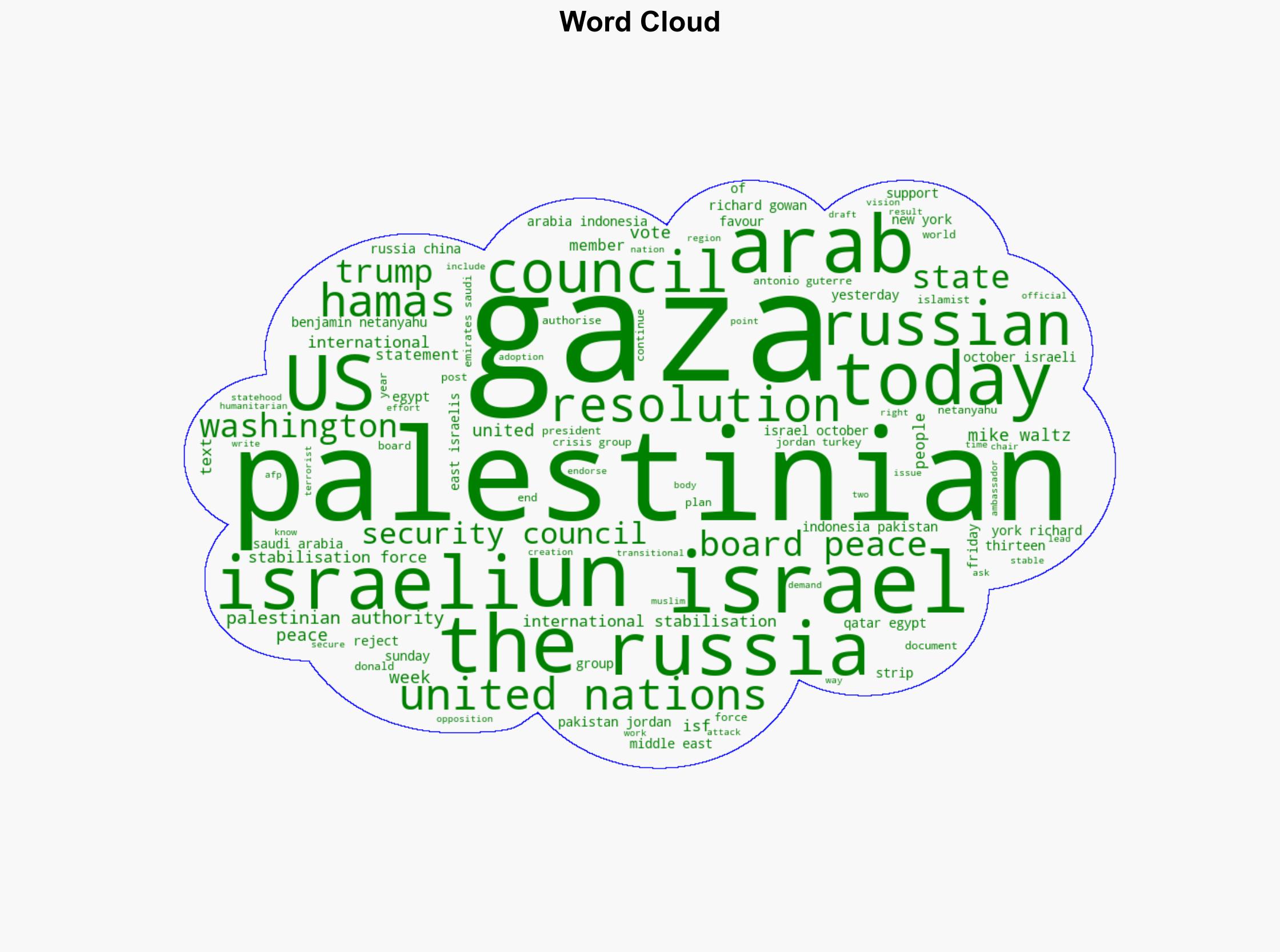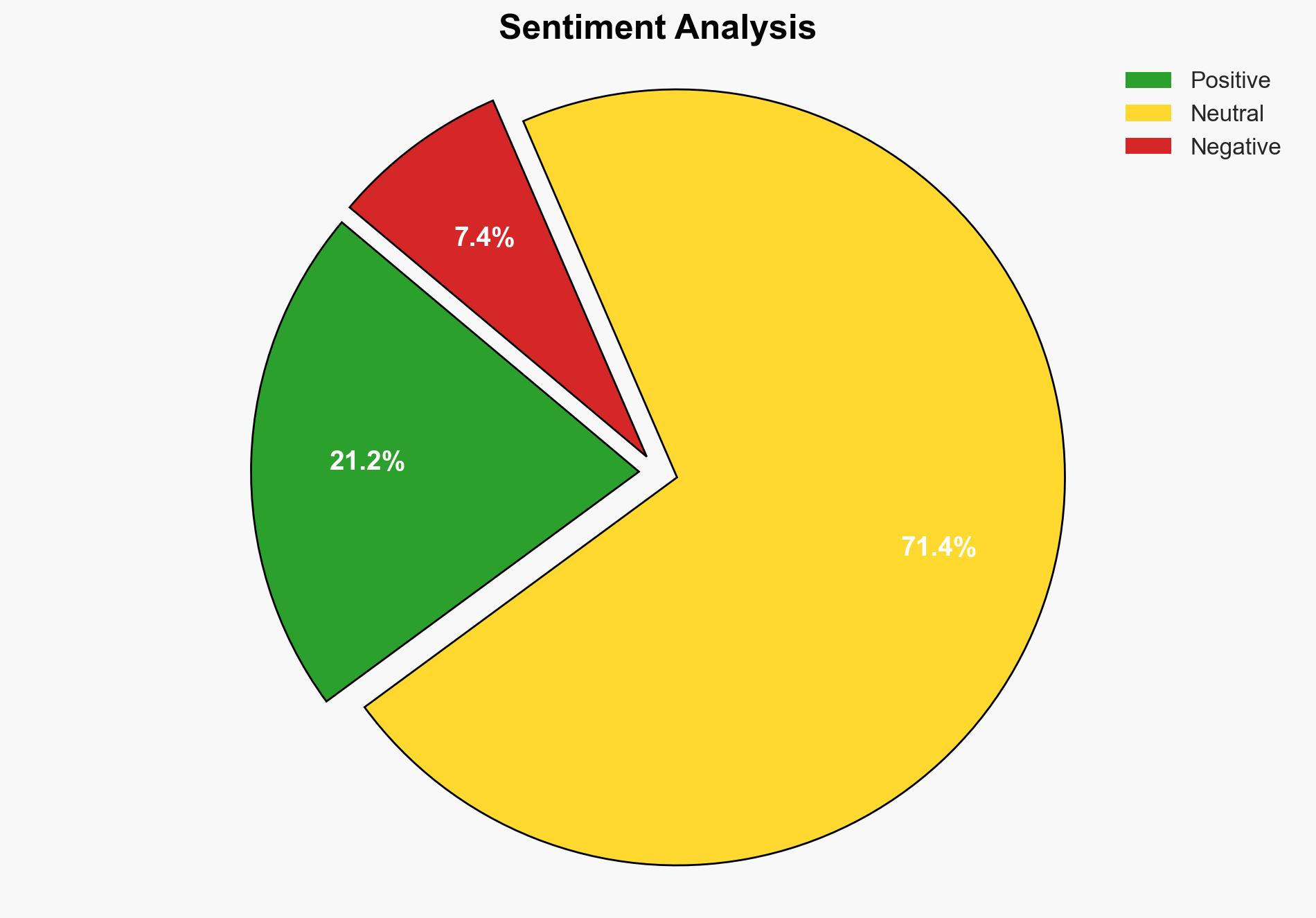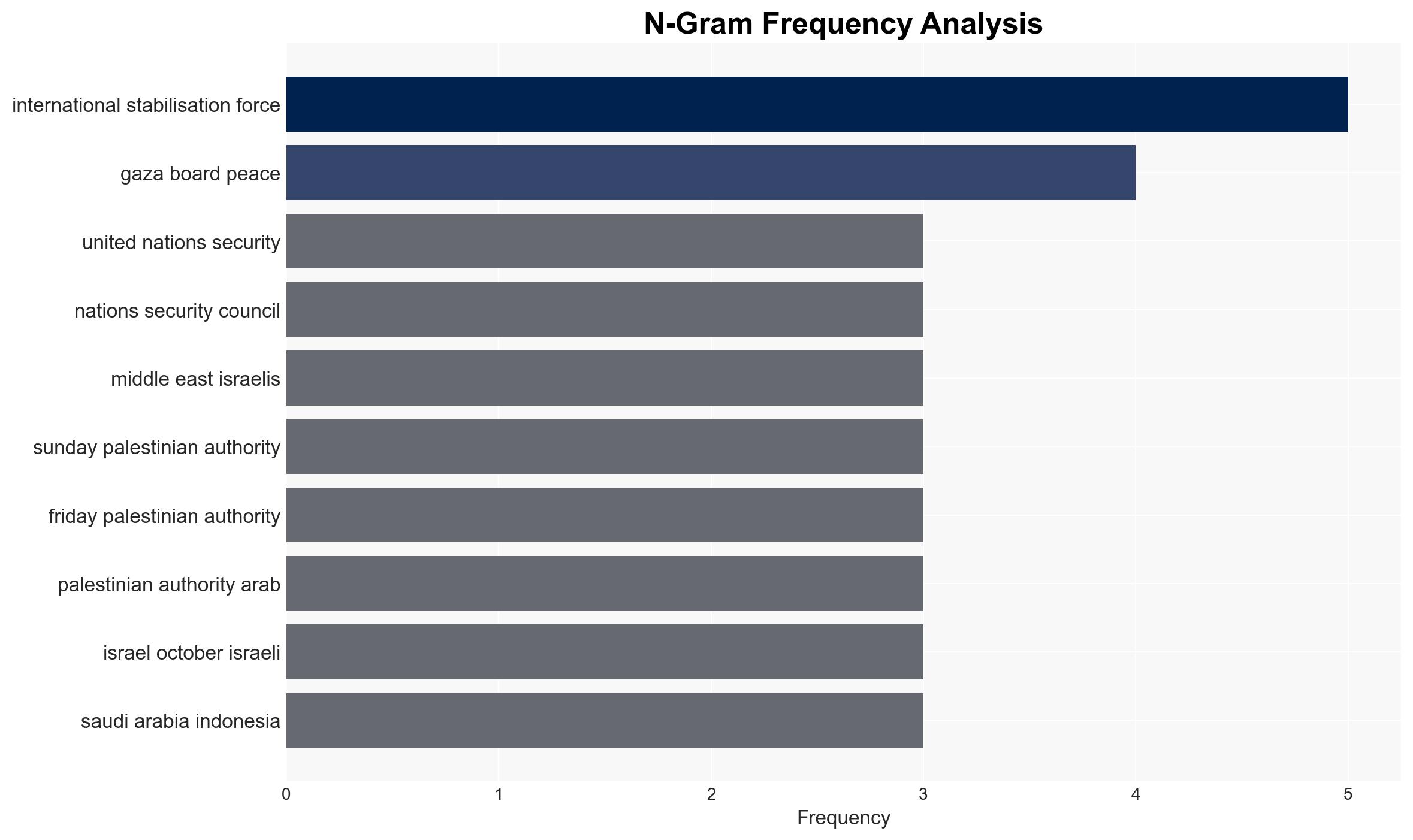UN set to vote on international force for Gaza – RTE
Published on: 2025-11-17
AI-powered OSINT brief from verified open sources. Automated NLP signal extraction with human verification. See our Methodology and Why WorldWideWatchers.
Intelligence Report: UN Vote on International Force for Gaza
1. BLUF (Bottom Line Up Front)
The UN Security Council’s vote to endorse a transitional authority and international stabilization force in Gaza represents a significant geopolitical maneuver, with potential to alter regional dynamics. The most supported hypothesis is that this initiative is aimed at stabilizing Gaza while sidelining Hamas. Confidence in this assessment is moderate due to the complexity of regional politics and the potential for unforeseen consequences. Recommended action includes diplomatic engagement with key stakeholders to ensure a balanced approach that addresses both Israeli security concerns and Palestinian humanitarian needs.
2. Competing Hypotheses
Hypothesis 1: The resolution aims to stabilize Gaza by reducing Hamas’ influence and establishing a governance structure that can lead to peace and security in the region. This hypothesis is supported by the resolution’s focus on disarmament and the creation of a transitional governing body.
Hypothesis 2: The resolution is primarily a strategic move by the US and its allies to assert influence in the Middle East, potentially marginalizing Palestinian aspirations for statehood and exacerbating tensions. This is suggested by the rejection of the resolution by Hamas and the Palestinian Authority’s conditional support.
Hypothesis 1 is more likely due to the international backing and the structured approach towards stabilization, although Hypothesis 2 cannot be dismissed given the geopolitical interests involved.
3. Key Assumptions and Red Flags
Assumptions: The international stabilization force will be effective in disarming non-state actors and maintaining peace. The transitional authority will be accepted by the majority of Palestinian factions.
Red Flags: The abstention of Russia and China indicates potential geopolitical friction. The outright rejection by Hamas suggests possible resistance and continued instability.
Deception Indicators: Public statements by involved parties may not fully reflect their strategic intentions, particularly in the context of regional alliances and rivalries.
4. Implications and Strategic Risks
The resolution could lead to increased tensions between Israel and Palestinian factions, particularly if the stabilization force is perceived as biased. There is a risk of escalation if Hamas or other groups resist disarmament. Economically, the initiative could either stabilize or further destabilize the region depending on its implementation. Information warfare could intensify as various actors seek to influence public perception.
5. Recommendations and Outlook
- Engage diplomatically with Russia and China to address their concerns and prevent geopolitical rifts.
- Facilitate dialogue between the transitional authority and Palestinian factions to ensure inclusive governance.
- Monitor the implementation of the stabilization force to ensure it operates impartially.
- Best-case scenario: Successful stabilization of Gaza leading to long-term peace.
- Worst-case scenario: Escalation of violence and further regional destabilization.
- Most-likely scenario: Initial resistance followed by gradual acceptance and stabilization, contingent on effective governance and international support.
6. Key Individuals and Entities
Donald Trump, Mike Waltz, Benjamin Netanyahu, Antonio Guterres, Hamas leadership.
7. Thematic Tags
Regional Focus, Middle East, International Relations, Peacekeeping, Geopolitics, Israeli-Palestinian Conflict
Structured Analytic Techniques Applied
- Causal Layered Analysis (CLA): Analyze events across surface happenings, systems, worldviews, and myths.
- Cross-Impact Simulation: Model ripple effects across neighboring states, conflicts, or economic dependencies.
- Scenario Generation: Explore divergent futures under varying assumptions to identify plausible paths.
Explore more:
Regional Focus Briefs ·
Daily Summary ·
Support us
·





